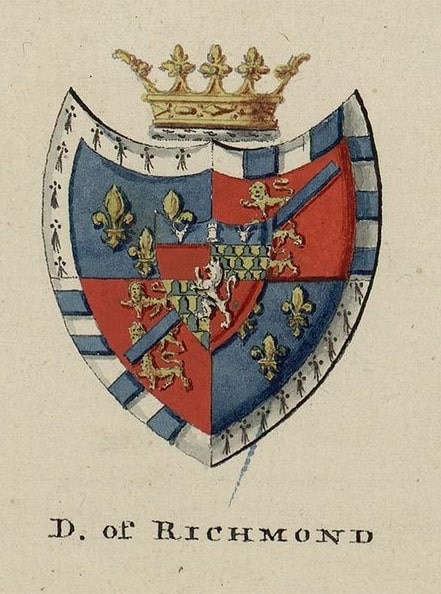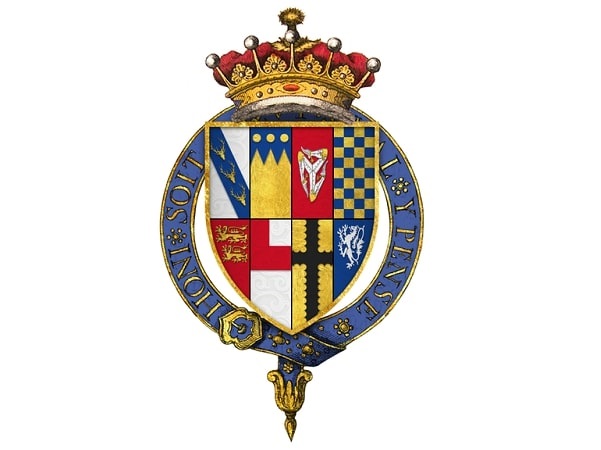The fun of genealogy is in discovering things you never knew about your family. Did you ever wonder if your family comes from a noble background? Your family’s noble past could be closer than you think.
Take Europe as an example. Mathematically speaking, virtually everyone there is descended from the Holy Roman Emperor Charlemagne in some way. How do you find out if your family has a coat of arms displaying their blue blood past?

What Is a Coat of Arms?
Traditionally, a coat of arms was a way to distinguish between different knights. Coat of arms symbols were displayed on shields, horses, banners, and crests. They included symbols, mottos, and more.
Historically, these dated back to the 1100s and were a means to honor knights and make it easy to spot them on the battlefield.
Such a family symbol is highly detailed and typically appeared on everything but the helm or top of the knight’s helmet. A personal coat of arms could only be passed down via the legitimate male line.
Is a Coat of Arms the Same as a Family Crest?
A family sigil is not the same as a coat of arms shield. Crests are simplified symbols that typically sat on the helm of a knight’s helmet. They were also used when the complete personal coat of arms was too detailed.
For example, a noble family may have worn their crest on a simple ring. Remember, these sigils evolved with every generation, with each male heir adding to the family’s crest.
As you can imagine, this quickly became complex and jumbled; thus, a simplified heraldry crest might have been employed instead.
Take note: the family crest meaning is the same as the full sigil, only it’s a more minimalist design incorporating only the main aspects of each family’s crest.
How Does a Coat of Arms Work?
There’s no such thing as coat of arms symbols associated with surnames. Traditionally, they were granted by a noble authority, such as the monarch. In some countries, like England and Scotland, the eldest daughter could inherit the family arms in the absence of a male heir.
Older sigils and crests can be claimed, but you must prove a legitimate link with the family member who originally registered it to make it your own.
Countries like England also have official registration bodies, such as the College of Arms. In the U.S. there’s no legal body, so anyone can register with the American College of Heraldry.
Just remember that it doesn’t give you any special privileges!
Coat of Arms Symbols: What Do They Mean?
When looking at a family symbol, what does it mean? Everything you see on a family sigil has a meaning associated with it. If you’re looking at a heraldry crest, what are some of the most familiar images you might come across?
Colors
Firstly, we have different colors. Each color communicates an attribute or a personality trait. Here are just some of them and their meanings:
- Red: warriorship or martyrdom
- Blue: truth and loyalty
- Green: hope and joy
- Purple: majesty and justice
- White: peace
- Black: grief
- Orange: worthy ambition
Flowers and Fruit
The flower typically represents joy and hope, whereas fruit symbolizes felicity or peace. Particular flora has specific meanings.
For example, the apple represents liberalism, and the bay leaf shows victory. The cypress represents life, and the oak tree shows strength.
The rose is particularly interesting as it marks the seventh son. The red rose also shows grace, whereas the white shows faith and love.
Animals
Finally, we have the animals. These often form a focal point for any personal coat of arms. Animals show off various traits of the person holding that family symbol. Some examples include:
- Boar: bravery
- Bear: strength and cunning
- Dove: peace and love
- Dolphin: diligence
- Eagle: strength, bravery, and alertness
- Two-Headed Eagle: conjoining forces
How to Find Your Real Family Crest
Finding a family symbol associated with your ancestors requires you to delve back in time. Particularly for Americans, with little history of heraldry, you may have to go back further than a European.
After tracing your ancestors back across the pond, the next step is to use an online database of crests and arms. There are plenty of them around, such as All Family Crests and House of Names.
Use the information about your ancestors that you found in GenealogyBank to search online databases of crests and arms, to see if your ancestors received arms to recognize their achievements. Despite what some tchotchke sellers may tell you, arms are rarer than you think, even for Europeans – but you won’t know until you try searching.
Conclusion
The first step to how to find your real family crest is to discover who your ancestors were. Since monarchs granted arms through achievements, you need to know which of your ancestors possibly earned one.
Explore history and uncover your background with GenealogyBank. You can even discover the meaning of your family name. With millions of exclusive records available, comb through more than 300 years of American history by creating your account now.
